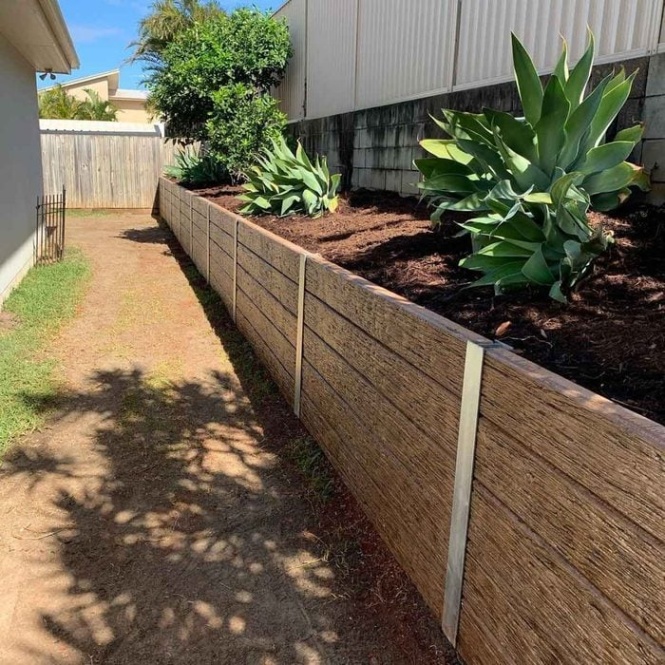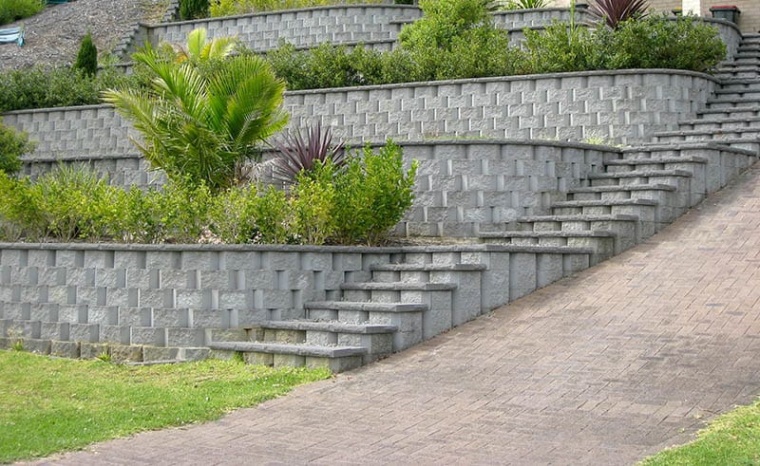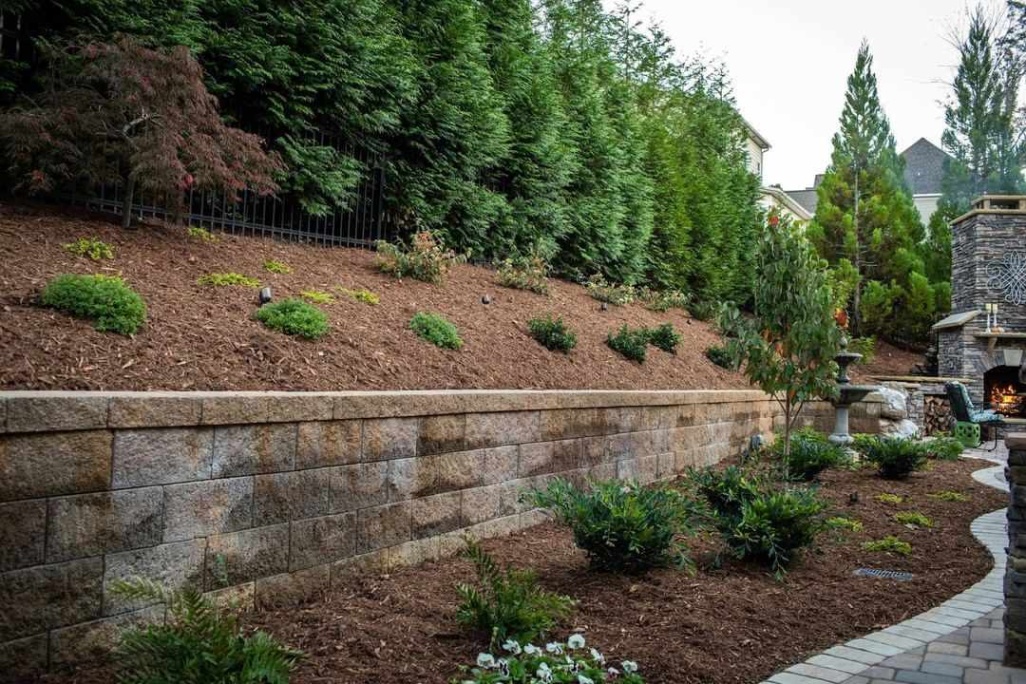Kreative Ideen Für Beeindruckende Mauerretention In Ihrem Garten
Retaining Walls Ideas
What do you mean by retaining walls?
Retaining walls are structures designed to hold back soil and prevent erosion in a variety of landscaping settings. They are commonly used in sloped areas to create terraces, level out a yard, or protect a property from the effects of erosion.
How can retaining walls enhance your outdoor space?

Image Source: familyhandyman.com
Retaining walls can add both functional and aesthetic value to your outdoor space. They can help create defined areas for different activities, such as gardening, seating, or outdoor dining. Additionally, retaining walls can be used to create visual interest and enhance the overall look of your yard or garden.
What are some popular retaining wall ideas?

Image Source: trees.com
There are numerous creative and innovative ideas for retaining walls that you can incorporate into your landscaping design. Some popular options include using natural stone for a rustic look, incorporating built-in seating for a functional and stylish touch, or adding lighting to highlight the wall’s features at night.
How can you build a retaining wall?

Image Source: trees.com
Building a retaining wall requires careful planning and execution to ensure its stability and longevity. The first step is to assess the area where the wall will be constructed and determine the appropriate design and materials to use. It is important to consider factors such as soil type, drainage, and slope when designing your retaining wall.
What are some key considerations when choosing materials for retaining walls?

Image Source: thespruce.com
When selecting materials for your retaining wall, it is important to consider factors such as durability, aesthetics, and cost. Some popular materials for retaining walls include concrete blocks, natural stone, brick, and timber. Each material has its own unique characteristics and benefits, so it is important to choose the one that best suits your needs and preferences.
What are some common problems with retaining walls?
Retaining walls can be prone to a variety of issues over time, such as cracking, bulging, or crumbling. These problems can be caused by factors such as poor construction, inadequate drainage, or soil movement. It is important to address any issues with your retaining wall promptly to prevent further damage and ensure its stability.
What are some creative ways to incorporate retaining walls into your landscaping design?
There are endless possibilities for incorporating retaining walls into your landscaping design to enhance the beauty and functionality of your outdoor space. Some creative ideas include using tiered retaining walls to create a cascading effect, incorporating water features or planters into the wall design, or adding decorative elements such as mosaic tiles or artwork.
What are some benefits of installing retaining walls?
Retaining walls offer a range of benefits for Homeowners, including preventing soil erosion, controlling water runoff, and creating usable space in sloped areas. Additionally, retaining walls can improve the overall aesthetics of your outdoor space and increase the value of your property.
Conclusion
In conclusion, retaining walls are versatile and practical structures that can enhance the functionality and beauty of your outdoor space. By incorporating creative Design Ideas and selecting the right materials, you can create a unique and visually appealing retaining wall that will stand the test of time.
FAQs
1. How tall can a retaining wall be?
A retaining wall’s height can vary depending on the materials used and the engineering behind it. In general, most residential retaining walls are between 3 to 4 feet tall, but taller walls may require professional design and construction.
2. Do I need a permit to build a retaining wall?
Permit requirements for retaining walls vary by location, so it is important to check with your local building department before starting construction. In some cases, a permit may be required for walls over a certain height or for walls that are considered a structural element.
3. How long does it take to build a retaining wall?
The time it takes to build a retaining wall depends on various factors, such as the size and complexity of the wall, the materials used, and the weather conditions. On average, a small retaining wall can be completed in a few days, while larger walls may take several weeks to build.
4. Can I install a retaining wall myself?
While some homeowners may be able to build a small retaining wall themselves, larger or more complex walls should be constructed by a professional contractor. Proper design, construction, and drainage are essential for the stability and longevity of a retaining wall.
5. What is the best material for a retaining wall?
The best material for a retaining wall depends on various factors, such as the wall’s height, location, and design. Common materials for retaining walls include concrete blocks, natural stone, brick, and timber. Each material has its own advantages and considerations.
6. How do I maintain a retaining wall?
To maintain the integrity and appearance of your retaining wall, it is important to regularly inspect it for any signs of damage, such as cracks or bulging. Additionally, keeping the wall clean and free of debris can help prevent issues with drainage and erosion.
7. How much does it cost to build a retaining wall?
The cost of building a retaining wall can vary significantly depending on factors such as the materials used, the wall’s height and length, site conditions, and labor costs. On average, homeowners can expect to pay between $3,000 to $10,000 for a basic retaining wall, but prices can be higher for more complex designs or premium materials.
Creative and innovative ideas for retaining walls to enhance your outdoor space and prevent erosion. Learn about popular materials, construction tips, and maintenance considerations. Discover the benefits of retaining walls and get inspired to incorporate them into your landscaping design.
retaining walls, landscaping, outdoor space, erosion prevention, materials, construction, maintenance, benefits
retaining walls ideas


